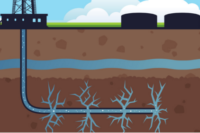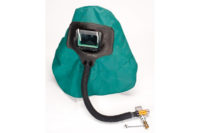Hazard alert discusses exposure to silica during hydraulic fracturing

OHSA’s Hazard Alert discusses the health hazards associated with hydraulic fracturing and focuses on worker exposures to silica in the air. It covers the health effects of breathing silica, recommends ways to protect workers, and describes how OSHA and NIOSH can help. Workers and employers need to be aware of the hazard that silica dust poses. Employers must ensure that workers are properly protected from exposure to silica. The Hazard Alert also offers a summary of other health and safety hazards to workers conducting hydraulic fracturing activities.
Hydraulic fracturing or “fracking” is a process used to “stimulate” well production in the oil and gas industry. It is not a new process, but its use has increased significantly in the past ten years because of new horizontal drilling and multi-stage fracking technologies that improve access to natural gas and oil deposits. It involves pumping large volumes of water and sand into a well at high pressure to fracture shale and other tight formations, allowing oil and gas to flow into the well.
NIOSH identified seven primary sources of silica dust exposure during hydraulic fracturing operations:
- Dust ejected from thief hatches (access ports) on top of the sand movers during refilling operations while the machines are running (hot loading).
- Dust ejected and pulsed through open side fill ports on the sand movers during refilling operations
- Dust generated by on-site vehicle traffic.
- Dust released from the transfer belt under the sand movers.
- Dust created as sand drops into, or is agitated in, the blender hopper and on transfer belts.
- Dust released from operations of transfer belts between the sand mover and the blender; and
- Dust released from the top of the end of the sand transfer belt (dragon's tail) on sand movers.
There are some things employers can do to protect workers from exposure to silica: monitor the air; control dust exposures by improving existing engineering controls and safe work practices; provide respiratory protection; provide training and information to workers about the hazards of silica and other chemicals; and provide training and information to workers about the hazards of silica and other chemicals.
Looking for a reprint of this article?
From high-res PDFs to custom plaques, order your copy today!




